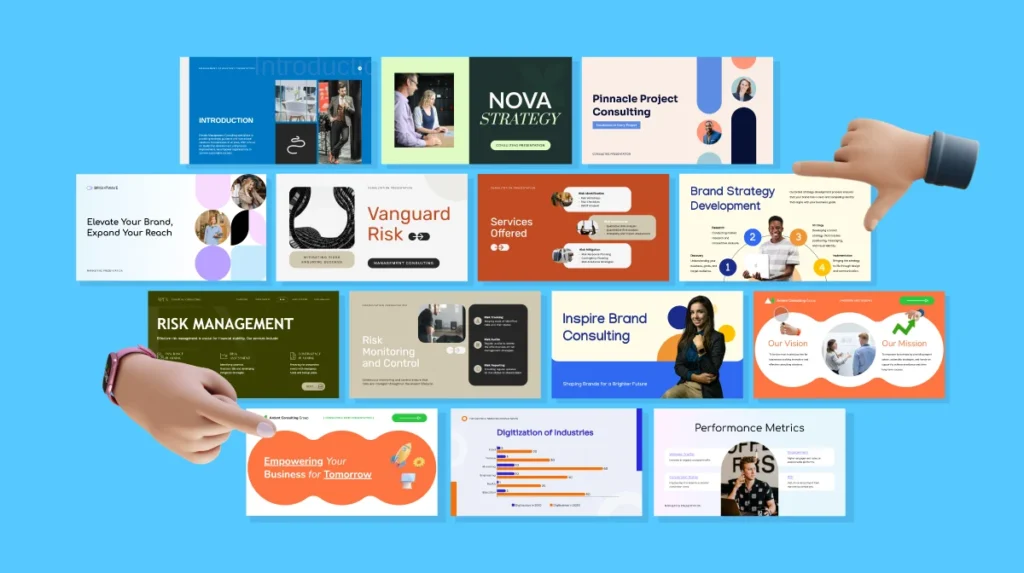Emerging tech is a jungle—fast, unpredictable, and full of buzzwords. Whether you’re into AI, blockchain, quantum computing, or some hybrid nobody’s even named yet, one thing’s for sure: consulting in this space is as much about trust as it is about tech.
If you want to stand out and win clients, it’s not about being the loudest voice or stacking credentials. It’s about clarity, consistency, and connection. Here’s a real-world guide to pitching yourself effectively—as someone who’s been there, failed a bit, and figured out what actually works.
Step 1: Know Your Tech Niche (and Own It)
Trying to be “the tech person who can do everything” won’t cut it in 2025. Each field—AI, blockchain, IoT, quantum—is a galaxy of complexity. You don’t need to know it all. You do need to focus.
Better than “I’m a tech consultant”:
“I help logistics companies integrate blockchain into their supply chain for better transparency.”
Or:
“I work with early-stage health tech startups to implement AI-powered diagnostics.”
Specificity builds credibility. It tells people exactly where you fit—and who should refer you.
Step 2: Show, Don’t Just Tell
Saying you’re “passionate about emerging tech” isn’t enough. People need proof. Not big wins—just real ones.
- Share a GitHub repo, even if it’s scrappy.
- Post a short write-up on an experiment you tried.
- Publish a 300-word blog about a problem you solved or a framework you tested.
One of my first consulting leads came from a blog titled “Why AI Can’t Count to Ten.” Not glamorous. But it showed I was thinking deeply—and publicly.
Step 3: Speak the Client’s Language
Most clients don’t care if your tech stack is bleeding-edge. They care if it solves their problems.
Instead of:
“I used advanced ML techniques to optimize inference.”
Say:
“I helped reduce model latency by 40%, which improved onboarding time and boosted conversions.”
Use language that connects outcomes to business value. That’s what clients pay for.
Step 4: Network Like a Human, Not a Pitch Bot
Don’t send cold DMs that read like sales templates. Don’t spam comments with self-promo.
Instead:
- Leave thoughtful comments on others’ posts.
- Join conversations in Discords, Slack groups, or niche forums.
- Share someone else’s post and add a quick insight of your own.
Your network is your pipeline—and 90% of consulting work comes from conversations, not cold calls.

Step 5: Have a Lightweight “Pitch Pack”
You don’t need a 15-slide deck. You need clarity. Your pitch pack should include:
- A simple one-pager with your focus, past work, and services
- A few bullet points of what you offer and why it matters
- A mini case study or before-after result (even if it’s a personal project)
Keep it clean, jargon-free, and easy to forward. Your goal is to make it effortless for someone to say, “I know someone who can help with that.”
Step 6: Be Honest About What You Don’t Know
Emerging tech evolves daily. You’re not expected to know everything—but you are expected to learn fast.
One of the best trust-building lines you can use:
“I’ll need to read up on that before giving a recommendation.”
Clients respect humility. Especially in new spaces, being real beats being overconfident.
Step 7: Price for Value, Not Time
You’re not just trading hours—you’re delivering results.
Don’t say: “I charge $50/hr.”
Say: “This project typically costs $1500 and includes A, B, and C. It usually results in X and Y.”
Anchor your rates to impact. It’s easier for clients to justify your fee when it’s tied to a business outcome, not a time slot.
Step 8: Keep Learning, Keep Sharing
Your pitch improves every time you publish a new idea.
Read something about edge AI? Post a takeaway. Built a tiny demo on decentralized identity? Share a screenshot. Even one-sentence insights can position you as someone who’s actively in the game.
Don’t wait until something is perfect—just keep showing up.
Final Thoughts: You Don’t Have to Be “Big.” Just Be Useful.
Here’s what I wish someone told me early on: You don’t need a big following, a master’s degree, or an invite to speak at conferences.
You need to:
- Pick a niche.
- Solve real problems.
- Talk like a human.
- Keep showing up.
That’s how you pitch yourself without “pitching.” That’s how people remember you. And eventually, that’s how you get paid to do the work you love—in the fields that are shaping the future.
Read more posts:- Implementing a Federated Learning System with TensorFlow Federated

